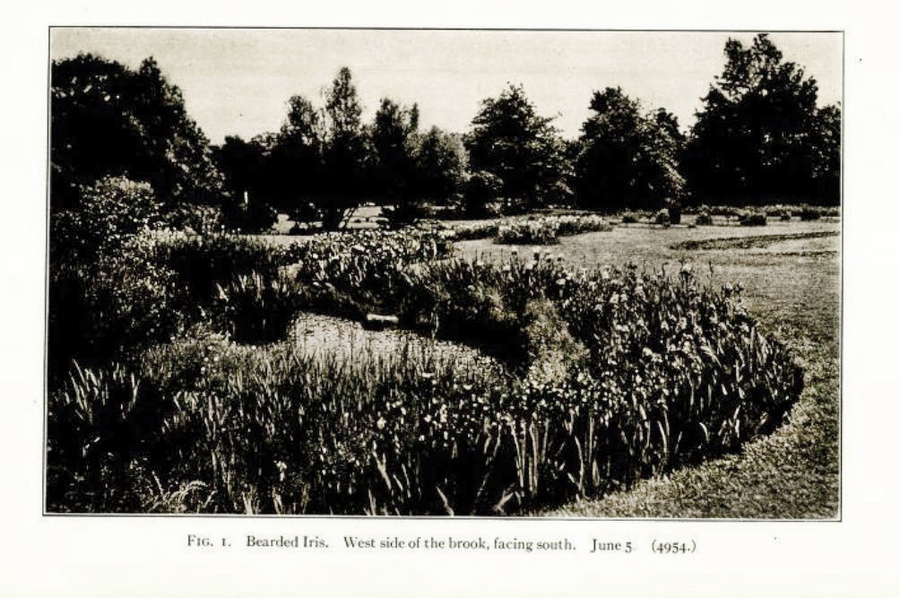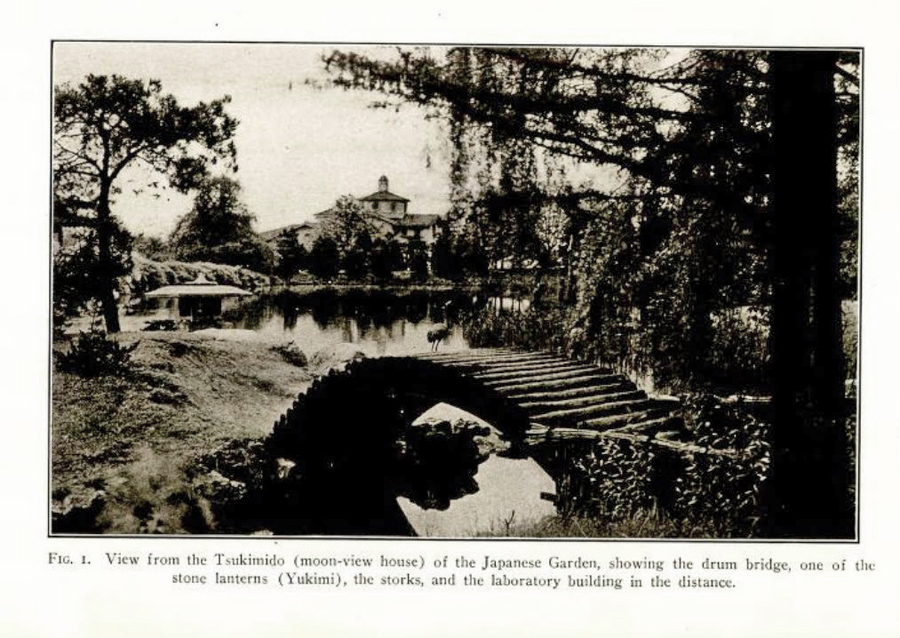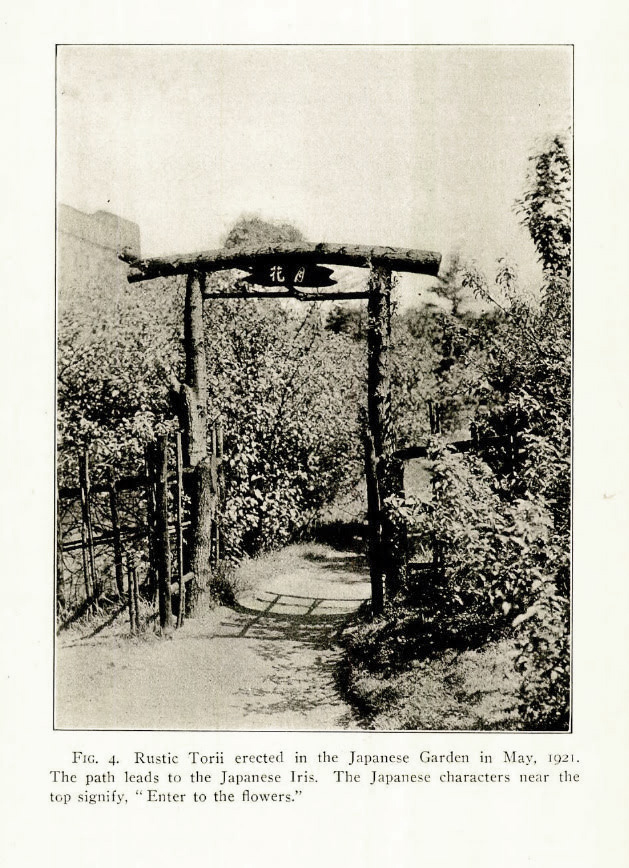This post follows on from ‘Picture Postals’ from Lovecraft: Brooklyn Botanical Gardens – part one. This week I take a look at the Japanese Gardens, a favourite of Lovecraft when in New York City.
Reading Lovecraft’s letters, one might imagine these gardens were perhaps something rather small and oblong. Picturesque but, in a busy city, rather ‘crammed in’ alongside the overshadowing museum. In reality they were effectively a large and highly landscaped park, some way from the museum building and maturing nicely by the mid 1920s. They formed just the corner of an even larger park. This larger park had many features, including a run of gigantic tropical conservatories that in the 1920s were said to be some of the most extensive and well-stocked in the world. In the view seen below the Museum is located in the top right, with the Japanese ‘hill and pond’ garden park below it.
Here we see one of the Japanese garden’s small shrines in the Lovecraft period, newly colourised by me. The artist seen painting was actually one of the staff, and thus was very lucky. Because the institution’s journal for the period shows that artists and photographers were strictly forbidden from bringing any kind of tripod, stand, easel, seat or sitting device. Thankfully dogs were also banned, which must have pleased Lovecraft.
The rest of the pictures are rather poor quality, but are from the Lovecraft period. As such they indicate what he would have enjoyed in one of his favourite places.
The White memorial, for the philanthropist — importer by trade — who made the vast gardens possible. He died shortly before Lovecraft came to New York.
The Japanese rock garden seen in 1917, with the planting around the boulders still maturing.
The Lily Pools outside the Conservatories were obviously meant to ease the landscapes of the Japanese Garden into the long terraces that ran alongside the Conservatories.
One of the Conservatories seen in 1936.
The omnipresent gardens were almost terrifying in their strangeness, with bizarre and unfamiliar forms of vegetation nodding over broad paths lined with curiously carven monoliths. Abnormally vast fern-like growths predominated; some green, and some of a ghastly, fungoid pallor. Among them rose great spectral things resembling calamites, whose bamboo-like trunks towered to fabulous heights. Then there were tufted forms like fabulous cycads, and grotesque dark-green shrubs and trees of coniferous aspect. Flowers were small, colourless, and unrecognisable, blooming in geometrical beds and at large among the greenery. … Fungi of inconceivable size, outlines, and colours speckled the scene in patterns bespeaking some unknown but well-established horticultural tradition.”
— from The Shadow out of Time.
















Pingback: Inside the Botanic Gardens glasshouses | Tentaclii